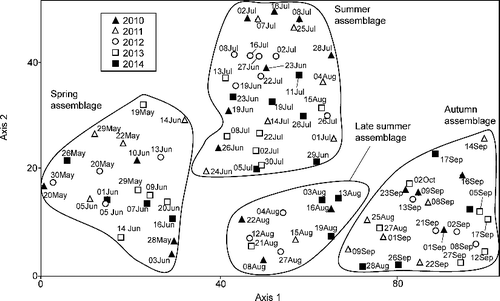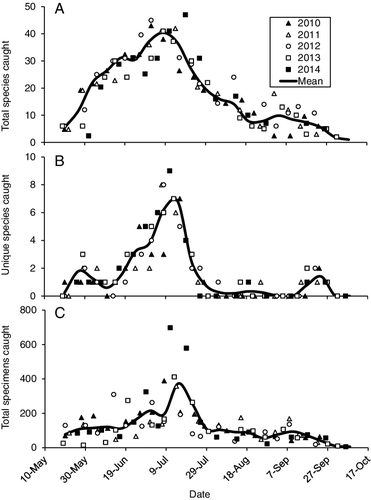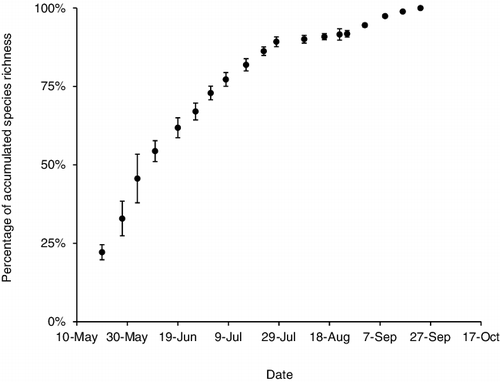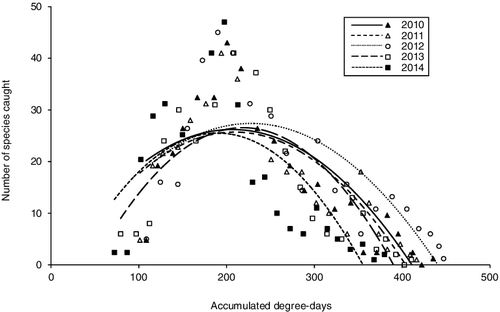Figures & data
Table 1. Summary table for 2-way analysis of variance performed on the five metrics, based on adult caddisfly data over 10 weeks in each of the 5 years of the study.
Figure 1. Detrended correspondence analysis ordination of the 88 samples from the 5 years of this study, suggesting four seasonal caddisfly assemblages.

Figure 2. Total number of adult caddisfly species caught per sampling date (A), number of species caught only on a single date per year (B), and total number of specimens (C). Markers indicate actual date of sample. Means were calculated per week.

Figure 3. Mean (±SE) cumulative percentage of caddisfly species caught per collecting date for all 5 years of the study.

Figure 4. Mean pollution tolerance value based on adult caddisflies per sampling date (A), and the Log10 shredder to filtering collector ratio for each sampling date (B). Markers indicate actual date of sample. Means were calculated per week.

Table 2. Overall indicator values (IV) and associated P values for the 23 significant indicator species of the four seasonal assemblages of caddisflies in Fairbanks Creek. Numbers below seasonal assemblages denote the percentage of perfect indication based on a combination of species relative abundance and relative frequency in a particular assemblage. Species are arranged in approximate descending IV value for each assemblage. TFG: trophic functional group. GC: gathering collectors, FC: filtering collectors, Pr: predators, Sc: scrapers, Sh: shredders. Tol: Hillsenhoff pollution tolerance values (Hilsenhoff Citation1987).
Figure 5. The number of species caught per year based on accumulated degree-days. Markers indicate actual number of species caught, while binomial fit lines show seasonal trends. Temperature data from Houghton (Citation2015b).

